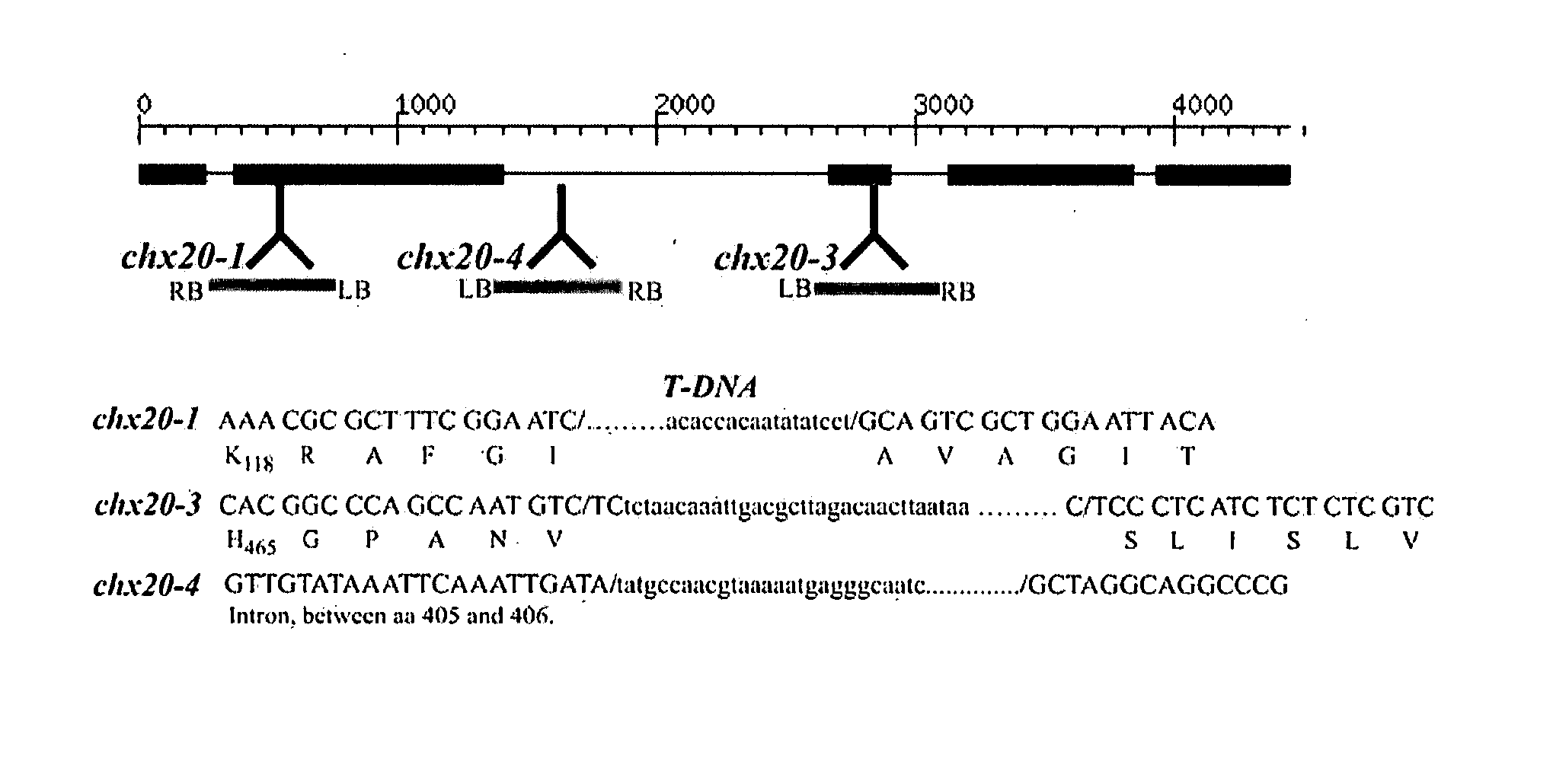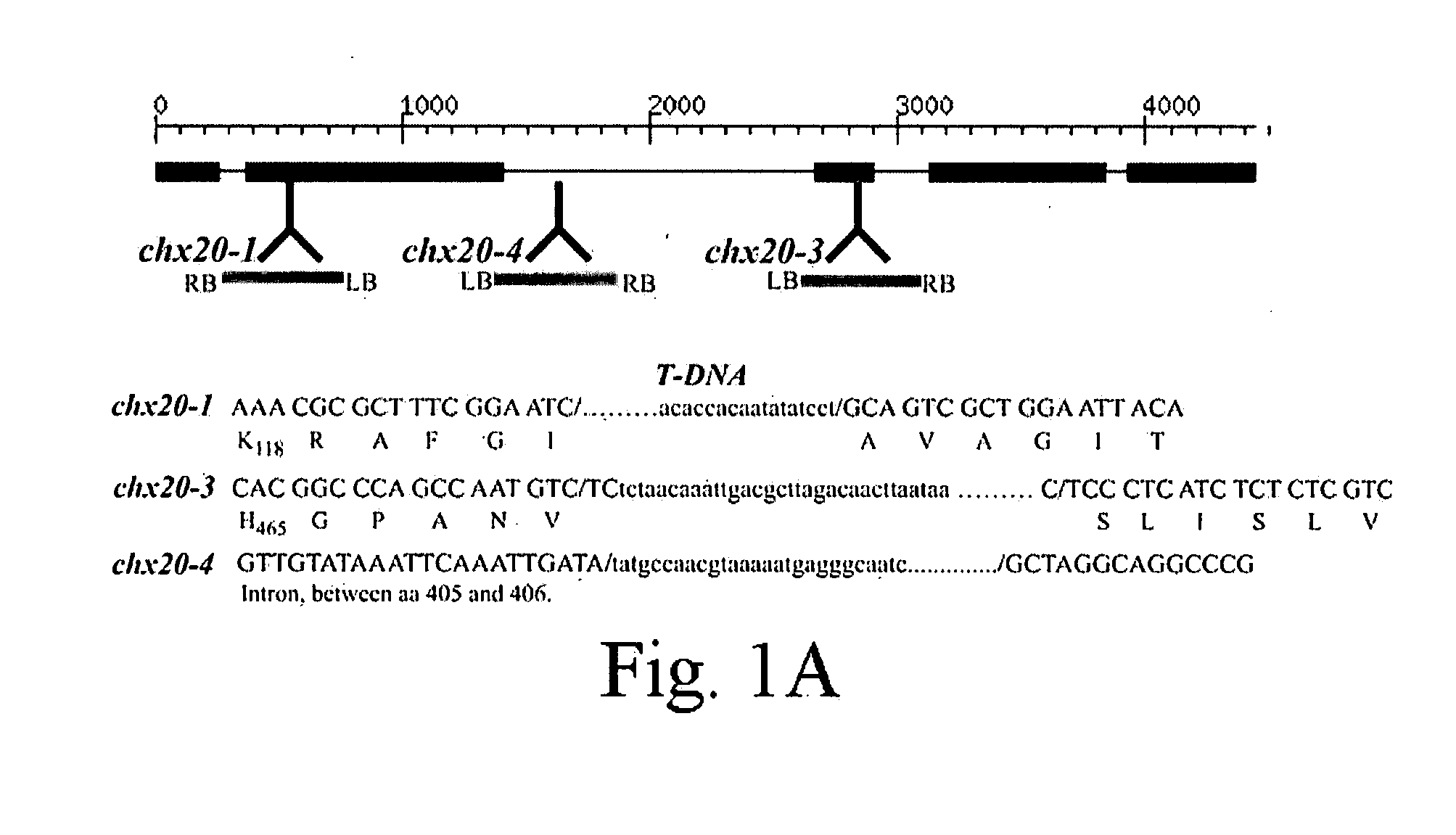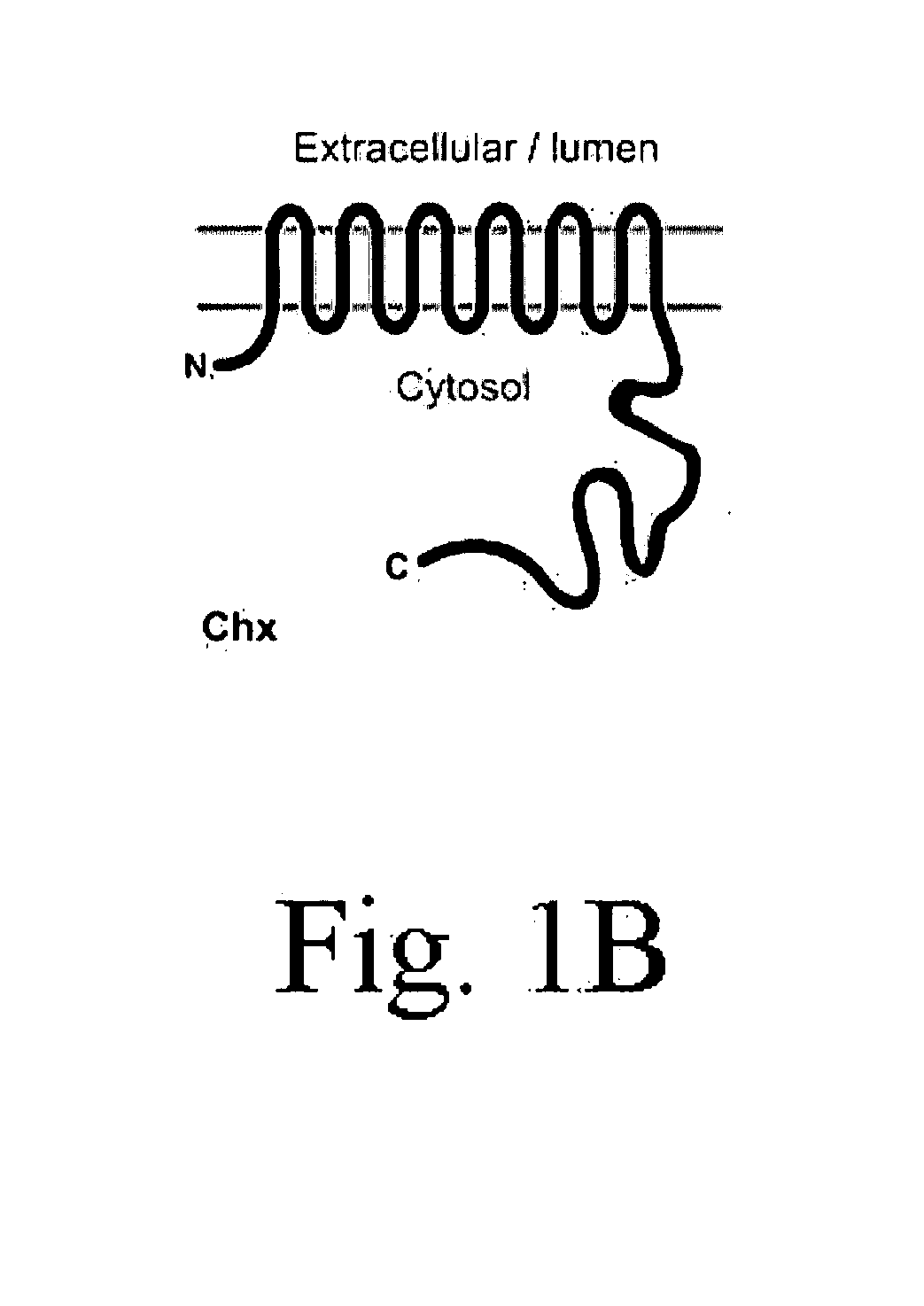Guard cell-specific tool for molecular manipulation of drought avoidance/water loss in plants
a technology of drought avoidance/water loss and guard cell, applied in biochemistry, sugar derivatives, organic chemistry, etc., can solve the problem that atchx20 cannot confer hygromycin b tolerance, and achieve the effect of enhancing yeast growth and improving growth
- Summary
- Abstract
- Description
- Claims
- Application Information
AI Technical Summary
Benefits of technology
Problems solved by technology
Method used
Image
Examples
example 1
AtCHX20 cDNA Isolation and Predicted Protein
[0063] To characterize the AtCHX20 protein, Applicants first extracted total RNA from Arabidopsis thaliana to identify the cDNA for AtCHX20. To obtain AtCHX20 (At3g53720) cDNA, total RNA was extracted from rosette leaves of 3-week-old Arabidopsis plants and first-strand cDNA was used to amplify the coding sequence. The primers at the start and end of the open reading frame (ORF; X20Cf and X20Cr; Table I) were designed based on the genomic sequence. A 2.5-kb fragment was amplified and its sequence (AY926476; SEQ ID NO:37) matched the coding sequence that is formed from five exons (FIG. 1A).
[0064] The predicted AtCHX20 protein of 842 residues (SEQ ID NO: 36) has two domains: (1) a hydrophobic domain (434 residues) with 10 to 12 transmembrane spans at the amino half; and (2) a large hydrophilic domain of 403 residues at the carboxylic end (FIG. 1B). The hydrophobic domain shows extensive similarity (56.5% similarity, 33.6% identity; E value...
example 2
Identification of Function of AtCHX20 in Yeast
[0065] The coding sequence of AtCHX20 was cloned in pYES-DEST52 yeast expression vector under the Gal promoter. Yeast mutants with disrupted kha1 gene alone exhibited no obvious phenotype (Maresova and Sychrova, 2005), so we expressed AtCHX20 in a yeast mutant (KTA40-2). This strain lacks functional vacuolar and PM-localized Na+ / H+ antiporters, PM Na+ pumps (Dnhx1 Dnha1 and Dena1-4), as well as the putative K+ / H+ exchanger (Dkha1; Maresova and Sychrova, 2005). Strain KTA40-2 is highly sensitive to salt and to high K+, so the transformant (KTA40-2-CHX20) was tested for its ability to grow on moderate levels of Na+ and very high K+.
[0066] Surprisingly, mutant yeast expressing AtCHX20 were consistently more sensitive on media containing 100 mM Na+ or 500 mM K+ at various pH (FIG. 2A) than the mutant yeast harboring the vector alone. KTA40-2 mutants grew as well as AtCHX20 transformants on standard synthetic complete (SC) medium.
[0067] At...
example 3
AtCHX20 is Preferentially Expressed in Guard Cells
[0070] Analyses of a guard cell transcriptome (Leonhardt et al., 2004; J. Kwak, N. Leonhardt, and J. I. Schroeder, unpublished data) revealed that only one member of the CHX gene family was highly expressed in guard cells. AtCHX20 showed little or no expression in mesophyll cells, whereas several other genes, such as CHX17, showed low to moderate expression (FIG. 4A). Furthermore, AtCHX20 expression is particularly strong in guard cells as shown by the 2-fold increase in normalized relative expression of AtCHX20 compared to that of AtKAT1, a K+ channel preferentially expressed in guard cells (Nakamura et al., 1995).
[0071] To verify the microarray results, AtCHX20 promoter driven GUS activity was determined. The AtCHX20 promoter has a sequence including base 19,921,006 to 19,923,519 on chromosome 3 whose complete sequence is available from accession no. NC—003074.4 (SEQ ID NO: 39). The promoter drives expression of a gene encoding t...
PUM
| Property | Measurement | Unit |
|---|---|---|
| Fraction | aaaaa | aaaaa |
| Fraction | aaaaa | aaaaa |
| Fraction | aaaaa | aaaaa |
Abstract
Description
Claims
Application Information
 Login to View More
Login to View More - R&D
- Intellectual Property
- Life Sciences
- Materials
- Tech Scout
- Unparalleled Data Quality
- Higher Quality Content
- 60% Fewer Hallucinations
Browse by: Latest US Patents, China's latest patents, Technical Efficacy Thesaurus, Application Domain, Technology Topic, Popular Technical Reports.
© 2025 PatSnap. All rights reserved.Legal|Privacy policy|Modern Slavery Act Transparency Statement|Sitemap|About US| Contact US: help@patsnap.com



